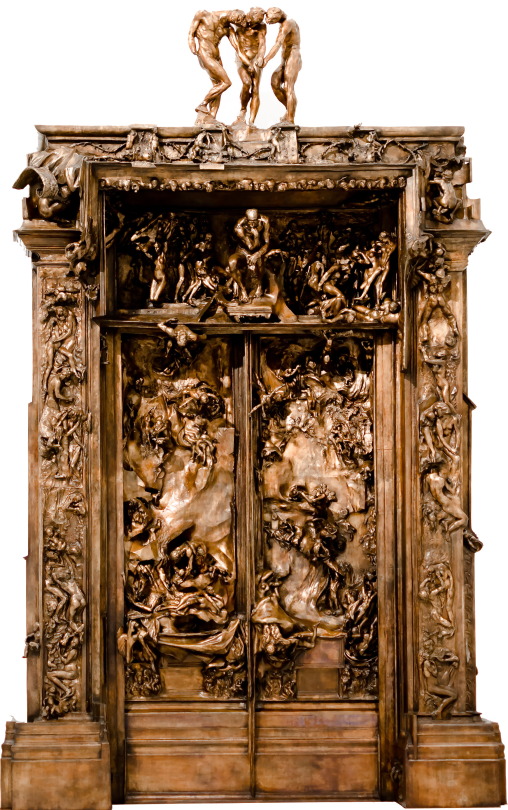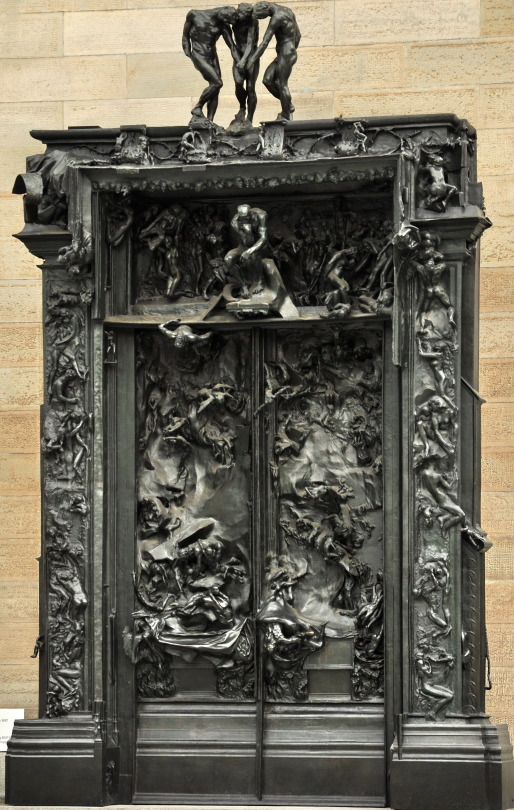Le Penseur
1903
The Thinker
The Thinker
Le Poète
Auguste Rodin (1840 -1917)

Bronze H. 180 cm ; W. 98 cm ; D. 145 cm
Cast made by Fonderie Alexis Rudier in 1904
Transfered to the musée Rodin in 1922
The work shows a nude male figure of over life-size sitting on a rock
with his chin resting on one hand as though deep in thought and is often
used as an image to represent philosophy.
There are about 28 full size
castings, in which the figure is about 186 centimetres (73 in) high,
though not all were made during Rodin’s lifetime and under his
supervision; as well as various other versions, several in plaster,
studies, and posthumous castings, in a range of sizes.
Rodin first
conceived the figure as part of another work in 1880, but the first of
the familiar monumental bronze castings did not appear until 1904.
Originally named The Poet (French: Le Poète), The Thinker was
initially a figure in a large commission, begun in 1880, for a doorway
surround called The Gates of Hell.

Rodin based this on The Divine Comedy
of Dante, and most of the many figures in the work represented the main
characters in the epic poem.
Some critics believe The Thinker, at the
centre of the composition over the doorway and at about 70 cm high
larger than most other figures, was originally intended to depict Dante
at the gates of Hell, pondering his great poem.

However, there are
questionable aspects to this interpretation, including that the figure
is naked, while Dante is fully clothed throughout his poem, and that the
figure, as used, in no way corresponds to Dante’s effete figure.
The
sculpture is nude, as Rodin wanted a heroic figure in the tradition of
Michelangelo, to represent intellect as well as poetry.
This
detail from the Gates of Hell was first named The Thinker by foundry
workers, who noted its similarity to Michelangelo’s statue of Lorenzo de
Medici called “Il Penseroso” (The Thinker).
Rodin decided to treat
the figure as an independent work, at a larger size. The figure was
designed to be seen from below, and is normally displayed on a fairly
high plinth, though the heights chosen by the various owners for these
vary considerably.

*

No comments:
Post a Comment